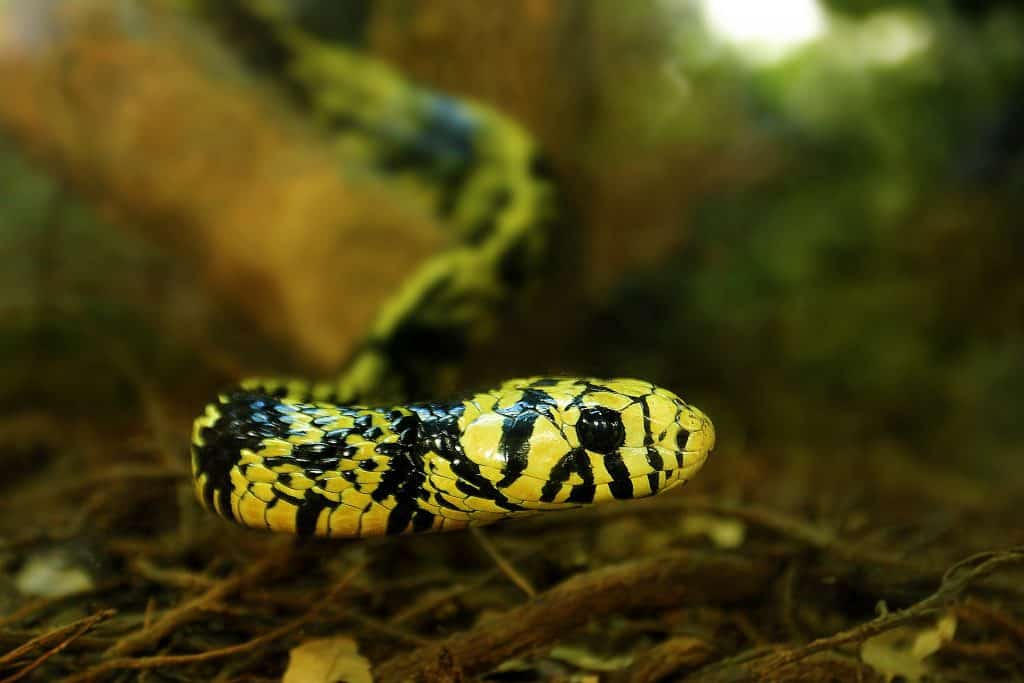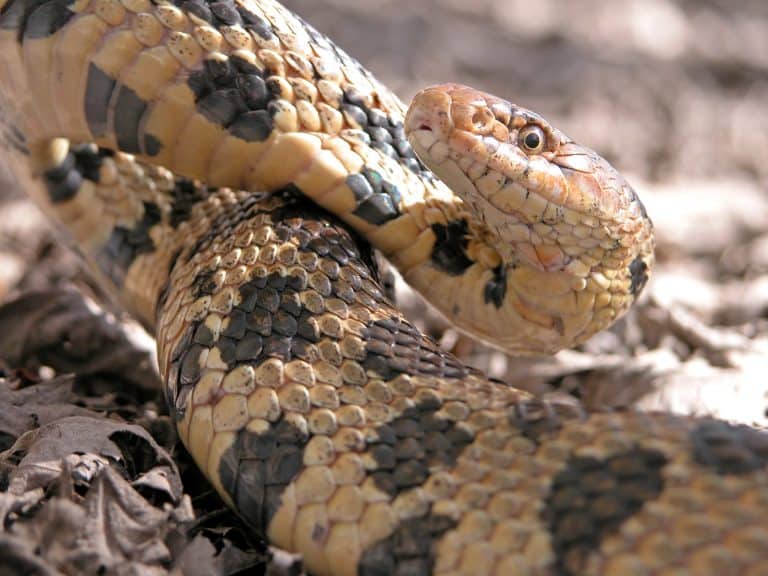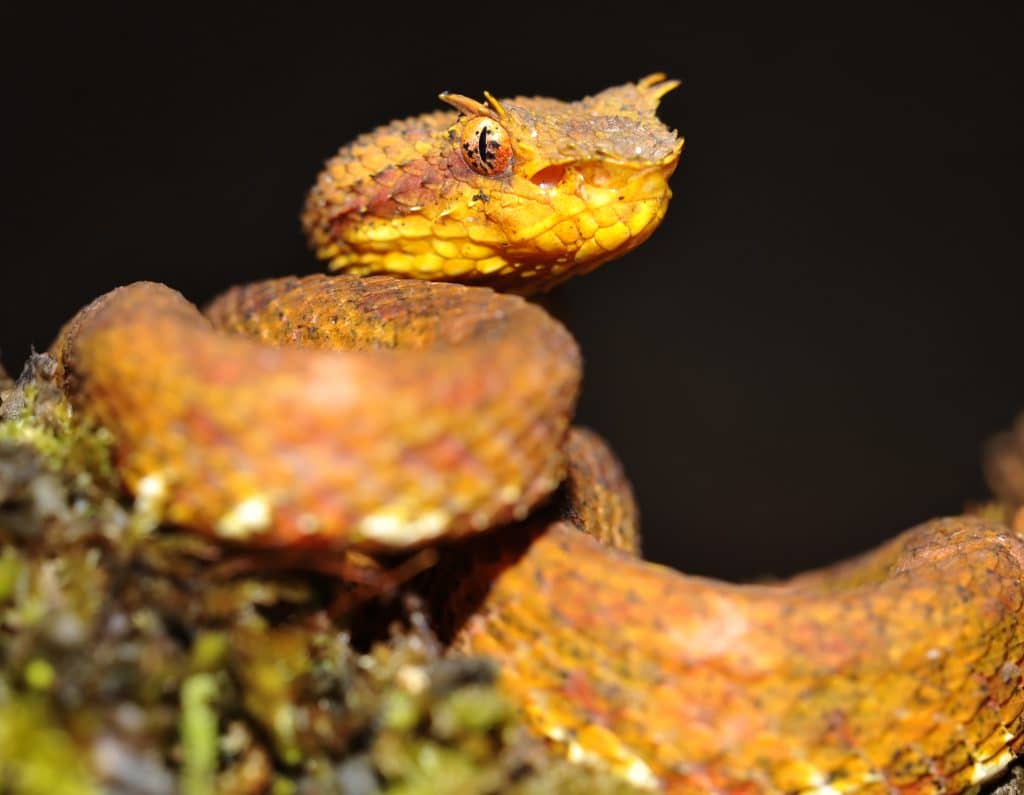Have you ever heard of a “chicken snake”? Despite its name, it’s not some weird reptile-bird hybrid. The chicken snake is just a common nickname for the Yellow Rat Snake, a non-venomous colubrid found across the southeastern United States. Known for its striking yellow and black stripes, this snake plays an important role in balancing nature. Let’s dive into everything you need to know about this often misunderstood creature.
Taxonomy and Classification
Scientific Classification
-
Scientific Name: Pantherophis alleghaniensis
-
Family: Colubridae
-
Genus: Pantherophis
-
Common Names: Chicken Snake, Yellow Rat Snake
Differences from Other Rat Snakes
Though it falls under the broad rat snake family, the chicken snake is distinguished by its bright yellow color and bold black stripes running lengthwise. It’s actually a subspecies of the eastern rat snake, but its vibrant hues make it easily recognizable.
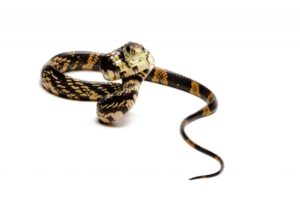
Physical Characteristics
Size and Length
Adult yellow rat snakes typically range from 4 to 6 feet in length, although some individuals have been recorded at over 7 feet. They’re long, lean, and incredibly agile.
Color Patterns and Markings
Bright yellow with four distinct black stripes, this snake looks almost like a highlighter with racing stripes. Juveniles tend to be more muted in color but brighten as they age.
How to Identify a Chicken Snake in the Wild
Look for a yellow or greenish body, black stripes, and a head that’s only slightly wider than the neck. They often resemble garter snakes but are much larger and more robust.
Natural Habitat
Geographical Range
Chicken snakes are native to the southeastern U.S., including Florida, Georgia, the Carolinas, and parts of Alabama and Mississippi.
Preferred Environments
These snakes love forests, swamps, farmlands, and even suburban neighborhoods. They’re especially fond of areas with trees and hiding spots.
Urban vs. Wild Habitats
Surprisingly adaptable, chicken snakes thrive both in the wild and around human settlements. Chicken coops (hence the name!) are an unfortunate favorite because of the easy access to eggs and rodents.
Behavior and Temperament
Activity Patterns (Day vs. Night)
They’re diurnal, meaning they’re active during the day, especially in spring and summer. In hotter months, you might spot them around dusk or dawn.
Climbing and Swimming Abilities
Chicken snakes are excellent climbers and often scale trees in search of bird nests or escape routes. They’re also decent swimmers, though they prefer dry land.
Defense Mechanisms
Not venomous, but they’ll rattle their tails, hiss, and strike when threatened. Their bite might hurt, but it’s harmless unless you’re a rodent.
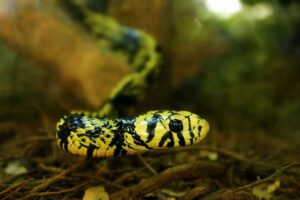
Diet and Hunting
Primary Prey
Their diet includes:
-
Mice and rats
-
Birds and bird eggs
-
Frogs
-
Lizards
Hunting Strategies
They’re constrictors, meaning they wrap around prey and suffocate it before consumption. Their stealth and speed make them deadly to pests.
Role in Controlling Rodents
These snakes are a farmer’s best friend, quietly controlling rodent populations without the need for traps or poison.
Reproduction and Lifecycle
Mating Season
Breeding typically occurs in spring (March to May), with males tracking females by scent trails.
Egg-laying Habits
Females lay up to 30 eggs in rotting logs or leaf piles, where the heat helps with incubation. Eggs hatch in about 2 months.
Lifecycle from Hatchling to Adult
Hatchlings are about 12 inches long and reach full maturity in 3–4 years. They grow quickly if food is abundant.
Importance in Ecosystem
Natural Pest Control
By consuming pests like rats and mice, chicken snakes help maintain healthy ecosystems and balanced food chains.
Role in the Food Chain
While they’re predators, they’re also prey for:
-
Hawks
-
Owls
-
Raccoons
-
Larger snakes
Common Myths and Misconceptions
Are Chicken Snakes Dangerous?
Absolutely not. They’re non-venomous and generally shy, avoiding human contact unless cornered.
Misidentification with Venomous Snakes
Their stripes and size often cause people to mistake them for venomous snakes, but they’re harmless and beneficial.
Chicken Snake vs. Other Rat Snakes
Key Differences
The yellow rat snake’s color makes it stand out from black or gray rat snakes. Also, they’re more common in the Southeast U.S.
Shared Traits
Like their cousins, they’re constrictors, non-venomous, and share similar diets and reproductive behaviors.
Human Interaction
Are They Safe Around Humans?
Yes! If anything, they’re more scared of you than you are of them. Let them be, and they’ll handle your pest problems.
What To Do If You Encounter One
Just leave it alone. If it’s indoors, call a local wildlife agency or use a broom to gently guide it outside.
Conservation Status
Threats and Predators
Their biggest threats are habitat loss, road deaths, and fear-driven killings by humans.
Protection Measures
Though not endangered, they benefit from protected woodland zones and public education campaigns to reduce unnecessary killing.
Fun Facts About the Chicken Snake
-
They can climb vertical walls and even trees using their belly scales!
-
Despite the name, they rarely eat chickens—they’re more into eggs or rodents near coops.
-
Farmers often encourage their presence in barns to control rats.
-
They can live over 20 years in captivity.
-
When startled, they may vibrate their tails in dry leaves to mimic rattlesnakes.
Conclusion
The chicken snake—aka the yellow rat snake—isn’t something to fear. It’s a gentle, helpful, and fascinating creature that deserves respect and protection. Next time you see one, remember: it’s just nature’s pest control, dressed in vibrant yellow stripes.
FAQs
1. Are Chicken Snakes Good Pets?
Yes, they’re popular in the reptile community for their docile nature and striking looks, though they require proper care and space.
2. Do Chicken Snakes Bite?
They might if threatened, but their bite is non-venomous and not dangerous.
3. What’s the Difference Between a Chicken Snake and a Corn Snake?
Corn snakes are usually more orange/red and have blotches instead of stripes. Both are rat snakes but look and behave differently.
4. How Can I Keep Chicken Snakes Out of My Chicken Coop?
Secure your coop, seal holes, elevate feed bins, and reduce rodent activity to deter them.
5. Are They Endangered?
No, chicken snakes are not endangered but benefit from conservation efforts and public awareness.
